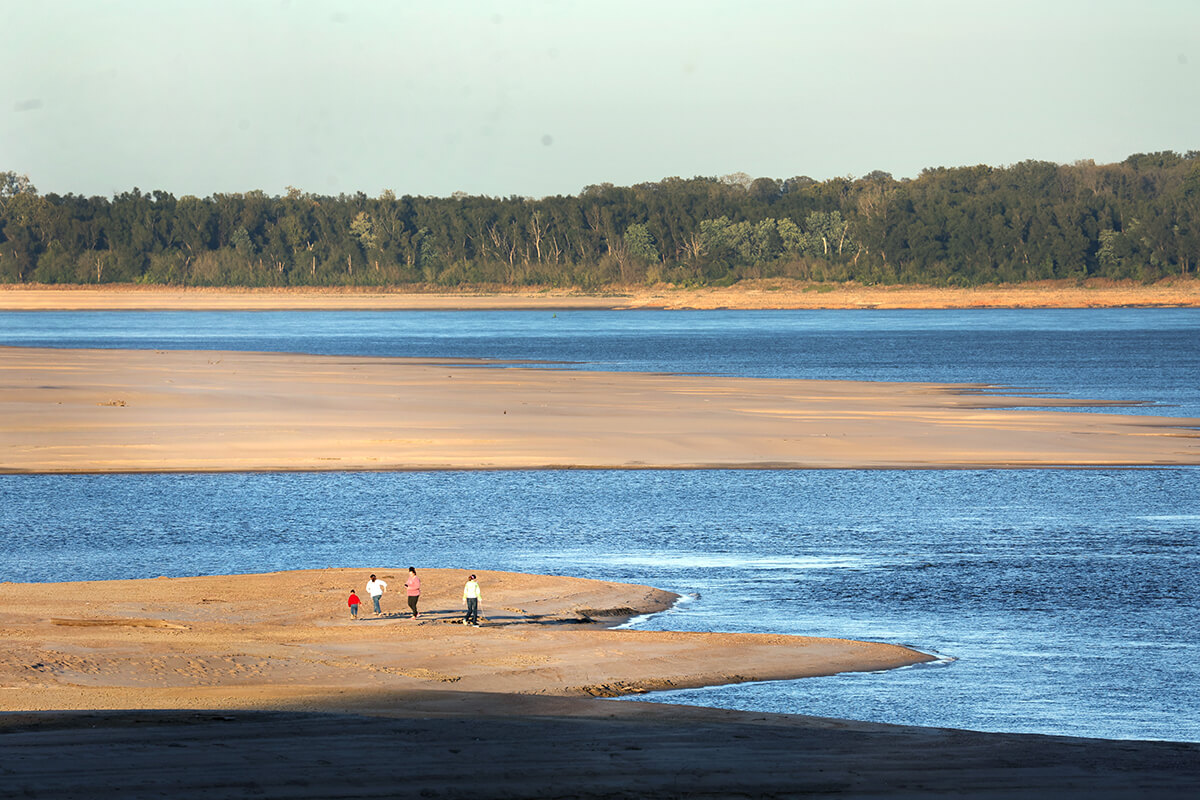As our planet overheats because of the burning of dirty energy sources like methane gas and coal, extreme weather is happening more and more frequently.
During the month of October, countries across the globe saw serious impacts from our rapidly warming world, from Nigeria, to Bangladesh, to the United States, Canada, and Brazil.
And while the Earth's overheating affects the weather in many different ways, this month, one central theme was apparent: rainfall disruptions, including severe droughts in some parts of the world and flood-inducing precipitation in others.
It might seem strange that we're seeing drought and flooding at the same time. But on a warmed planet, these dual threats are actually both more likely.
When it's abnormally hot outside, more water evaporates from rivers, lakes, oceans, and even vegetation, drying out landscapes. And if this combines with a lack of rainfall, climate-fueled droughts occur.
At the same time, a warmer atmosphere can hold more water. So as it gets hotter outside, more water evaporates and can stay in the air. Then, when it does rain, it pours, making floods more likely and worse.
Save $10,000 on solar panels without even sharing your phone number Want to go solar but not sure who to trust? EnergySage has your back with free and transparent quotes from fully vetted providers that can help you save as much as $10k on installation. To get started, just answer a few questions about your home — no phone number required. Within a day or two, EnergySage will email you the best local options for your needs, and their expert advisers can help you compare quotes and pick a winner. |
Here, we've highlighted five major water-related weather occurrences from this month.
Brazil's intense drought

Earlier this year, Brazil saw serious flooding that destroyed communities and submerged croplands. But now, the nation is facing the opposite threat: a severe drought that, in some areas, is the worst recorded in decades, reports the Associated Press. Over the past two months, the water level of the Amazon River has decreased, largely due to a dearth of rain. This represents an immense problem for towns that rely on the river as the primary means of receiving shipments of food and fuel. The city of Tefe, and its population of 60,000, has been especially affected, unable to receive shipments of goods via river.
Nigeria's devastating floods

Africa's most populous country faced its worst flooding in over a decade this past month, partially due to an increase in intense rainfall, which was fueled by a warming climate. Over 600 people were killed, thousands of homes were destroyed, and almost 1.5 million people have been displaced. Over 2.5 million Nigerians are feeling the impacts of the flooding, around 60% of whom are children. These young people are especially vulnerable to flooding because they're at an elevated risk of drowning and catching waterborne diseases.
The Mississippi River's record-low water level

A lack of rain across the states that border the Mississippi River has left some areas of the river drier than ever. In Memphis, for example, the river's water level was -10.75 feet, a record low. The drought is causing serious economic issues for the people who rely on the river to transport goods. Over three-fifths of the United States' corn and soybean exports move across the country via the Mississippi, meaning this drought is making crop transportation much more difficult. Barges filled with food crops are backed up, and with little rain forecasted in regions along the river, many farmers are in trouble.
Cyclone Sitrang in Bangladesh

An immensely powerful cyclone struck Bangladesh on Oct. 25, dumping about 17 inches of rain in just two days. Roughly one million people evacuated in order to avoid the worst impacts of Cyclone Sitrang, which ended up knocking out power for around 10 million people. As the Earth overheats, powerful storms like Sitrang are likely to be more intense, as well as more frequent, endangering the people of Bangladesh.
The drying up of Canada's Neekas River

In British Columbia, parts of the Neekas River have been so dry that university researchers stumbled upon a disturbing scene: tens of thousands of dead pink salmon rotting in the dried up waterway. The unprecedented mass die-off has been attributed to the lack of rainfall this autumn, worsened by a warmer climate. Because Canada relies on salmon as a central part of its immense fishing industry, this troubling discovery represents a worrying trend, not only for wildlife, but also for the Canadian people.
Follow The Cool Down on Instagram and subscribe to our newsletter.









